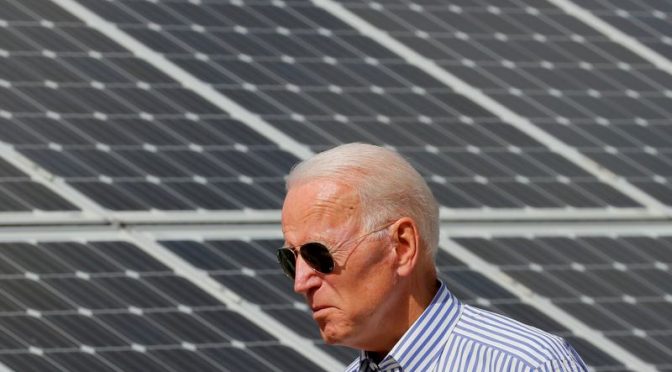On Earth Day, the world’s political leaders gathered at US President Joe Biden’s climate summit. If the world’s three largest economic blocs agree on the importance of carbon pricing, the summit will send a strong signal across the world.
Opinion piece by Statkraft CEO, Christian Rynning-Tønnesen
The period leading up to the UN Climate Change Conference in Glasgow in November constitutes a great opportunity to gather support for climate measures among world leaders. If the three largest economies in the world – USA, EU and China – stress the importance of a price on carbon emissions, it would send a strong signal. For nations, companies and individuals in large parts of the world, greenhouse gas emissions would never again be free of cost.
The polluter pays
With President Biden’s commitment to cutting the United States’ emissions by half by 2030, we need the right tools to cut emissions. One of the most forceful instruments to that end is carbon pricing – a mechanism by which those responsible for CO2 emissions have to pay for the emissions. This makes it profitable to cut emissions, or opt for emission-free solutions, such as renewable energy.
The EU already has carbon pricing. The European emissions trading system (EU ETS) has been in place since 2005. The US lacks a common carbon price, but several US states, with California leading the way, have adopted carbon pricing through quota markets. In February of this year, China launched what will become the world’s largest carbon trading market. With the launch of the Chinese quota market, close to a quarter of global emissions will be covered by a form of carbon pricing.
An important target must be for all greenhouse gas emissions to be covered by carbon pricing.
The three giants could lead the way
With President Joe Biden in the White House, the launch of the EU Green Deal, and China’s pledge to become carbon neutral by 2060, the world could take a giant leap on climate action.
The idea of a global agreement on carbon pricing has been a desired, but unattainable ideal in climate policy. In recent years, it has however become clear that not all nations need to agree on a single system. The emergence of various national and regional schemes for carbon pricing demonstrates that many countries are willing to take the lead. In the same way that climate negotiations were revitalised by the bottom-up approach of the Paris Agreement, carbon pricing has experienced a national and regional breakthrough during the past decade.
This development could now be further strengthened, if the three largest world economies agree on a statement that they will use some form of carbon pricing as a key instrument in climate policy.
Carbon pricing works
There are many benefits linked to carbon pricing:
- Firstly, it is a cost-efficient instrument in climate policy. Cost-efficient measures are hard currency when many other measures require economic support.
- Secondly, it is a fair mechanism, since it follows the principle that the polluter pays. The carbon pricing must be set up in a way that secures income to the state, which can be used to finance other climate policy initiatives, as well as support a just transition.
- My third point is that carbon pricing works. It is proven that it leads to emissions reduction and boosts the energy transition, and it incentivises all investments encompassed by it, large and small. In Europe we have seen a massive shift from fossil to renewable electricity production, which is in large part due to carbon pricing. It’s an important reason why emissions encompassed by the emissions trading scheme fell by around 35% between 2005 and 2019.
Although carbon pricing alone cannot bring about sufficient emissions cuts, it should be a decisive principle in climate policy.
Stopping leakages
During the past year the US, the EU, China and many other countries have pledged to become climate neutral. These targets will require great adjustments, and the differences in competitive advantage could become large if emissions have a price in some countries, while not in others. This could create a risk of leakages – companies with emissions choose to move their operations to countries without carbon pricing. The more countries introduce carbon pricing, the fewer leakages will occur.
Carbon pricing has proven effective and possible to introduce, although it is not realistic to expect a unified price across the world. An agreement between the world’s three largest economies on setting a price on emissions, could make 2021 the year of a historic turning point for the global fight against climate change.


